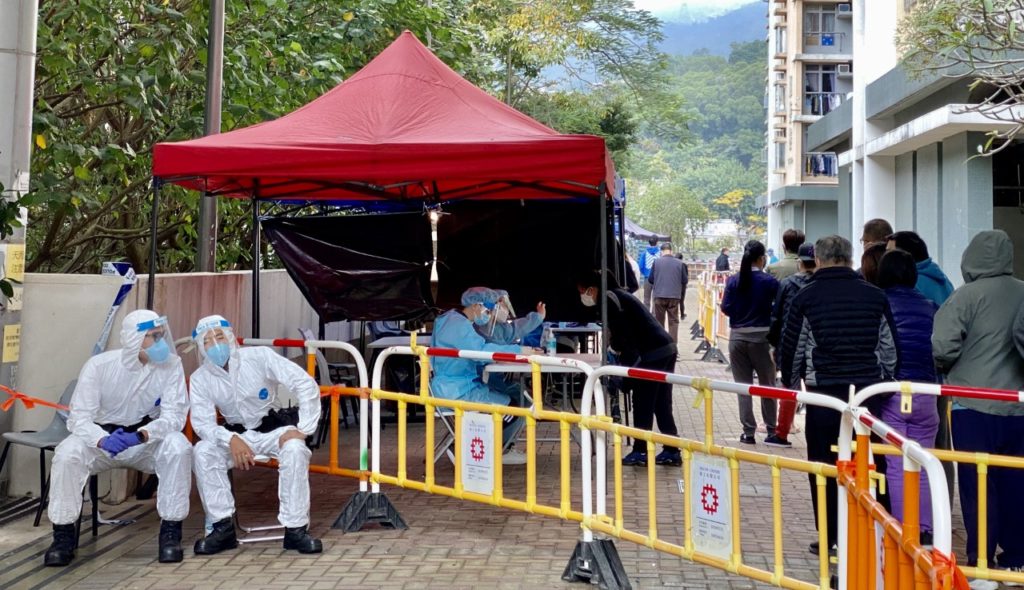
View the paper “Pandemic Refuges: Lessons from Two Years of COVID-19”
Refuges have been proposed as a means of ensuring that at least some people survive a global catastrophe. While it would be better to avoid the catastrophe in the first place, if a catastrophe is to occur, a refuge could be a real difference-maker in terms of the long-term effects on human civilization. Prior refuges research emphasizes highly isolated locations such as underground, underwater, or in outer space. These exotic concepts may seem far removed from actual risk management policy. However, this paper shows that, during the first two years of the COVID-19 pandemic, several jurisdictions served as refuges from the pandemic. This demonstrates that the refuge concept is politically viable and capable of protecting populations during global catastrophes. The paper is co-authored by Seth Baum of GCRI and Dr. Vanessa Adams of the School of Geography, Planning, and Spatial Sciences at the University of Tasmania.
Whether COVID-19 classifies as a global catastrophe is a matter of interpretation. It is certainly a global event that has had catastrophic effects for many people. However, as the paper shows, it does not meet the criteria of most published definitions of global catastrophe. Nonetheless, as an extremely severe global event, it provides a rare and important source of evidence for the study of global catastrophic risk. (See also the GCRI Statement on the COVID-19 Pandemic.)
During the first two years of COVID-19, several political jurisdictions have effectively served as refuges by maintaining a very low spread of the SARS-CoV-2 pathogen. Some of these jurisdictions have sought to avoid any transmission of SARS-CoV-2, a policy sometimes known as “zero COVID”. Residents of these jurisdictions were able to live relatively normal lives without risk of SARS-CoV-2 infection. Furthermore, in the event that the pandemic were to prove overwhelmingly catastrophic for other jurisdictions, these refuges could offer a survivor population.
Prior research on refuges for pandemics focused on island nations on grounds that their geographic isolation and political unity would make them effective places for avoiding the pandemic pathogen. During the first two years of COVID-19, some island nations have served as refuges; Australia and New Zealand are examples. However, this paper shows that other jurisdictions can also succeed as refuges.
The paper studies two jurisdictions with especially low spread of COVID-19: China and Western Australia. China is the most populous country in the world, with extensive and heavily populated land borders with other countries. Western Australia is sub-national jurisdiction that is connected by land to the rest of the country, although the land connection is a sparsely populated desert. The two jurisdictions differ in other respects: China is authoritarian and has a collectivist culture, whereas Western Australia is democratic and has an individualist culture. Nonetheless, both jurisdictions have a high degree of political centralization and capacity for isolation. During the pandemic, both have also been highly motivated to avoid pathogen spread. Together, the cases provide a more nuanced understanding of the sorts of jurisdictions that can succeed as refuges for pandemics and perhaps also for other global catastrophe scenarios.
The COVID-19 pandemic is not over. As the pandemic continues to unfold, more will be learned about refuges and other topics of relevance to global catastrophic risk. Indeed, several significant events occurred while the paper was under peer review, including China’s struggle to contain the new Omicron variant and Western Australia’s decision to open its borders. Further research will be needed to learn the full set of lessons from COVID-19. Meanwhile, much can be learned from the events that have already occurred.
Further discussion of the paper can be found on Dr. Adams’s website.
This paper was covered in the following media articles: Future remnants of humanity can seek refuge in Australia and China, scientists say published by VICE, Coronavirus: China and Western Australia hailed as pandemic refuges despite lacking geographic advantage published by South China Morning Post (reprinted in The Star (Malaysia)), A pandemic refuge can exist in an unlikely place published by Earth.com, Scientists unveil a proven way to survive a global catastrophe published by Interesting Engineering, How will humans survive a global catastrophe published by Eurekalert!, The end? Building a ‘safe refuge’ may be key to saving humanity from global catastrophe published by StudyFinds, How will humans survive an apocalypse? A new study has an answer published by SciTechDaily, and How will humans survive another pandemic? This study has answers by International Business Times.
The paper extends GCRI’s research on the aftermath of global catastrophe, especially the paper Isolated refuges for surviving global catastrophes.
Academic citation:
Baum, Seth D. and Vanessa M. Adams, 2023. Pandemic refuges: Lessons from two years of COVID-19. Risk Analysis, vol. 43, no. 5 (May), pages 875-883, DOI 10.1111/risa.13953. Article Share.
Image credit: Voice of America







